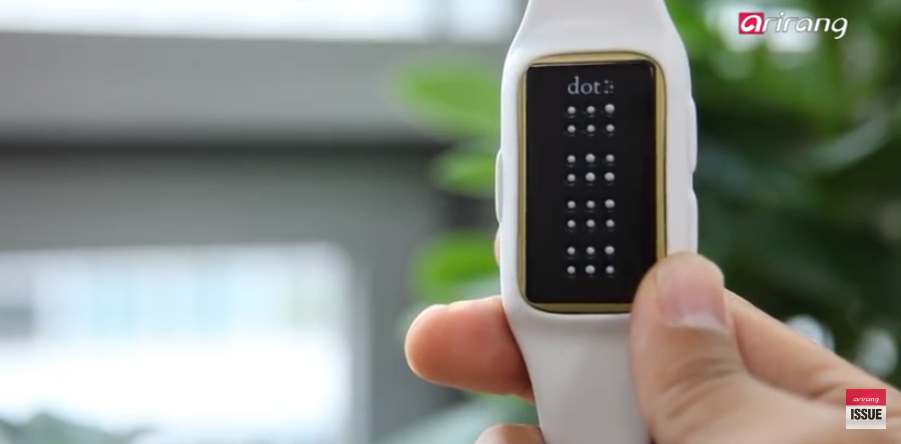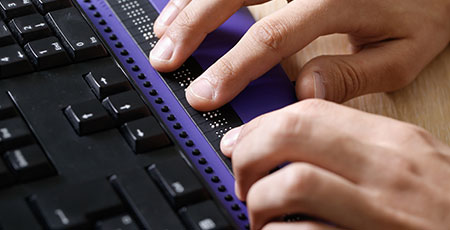OCR Devices for the Blind: Turning Print to Speech in Real-Time
An Overview to Life-altering Assistive Innovation for the Blind and Visually Damaged
The improvement of assistive innovation has introduced a transformative period for individuals who are blind or aesthetically impaired, offering devices that boost autonomy and improve everyday experiences. Technologies such as wise navigation tools and AI-driven applications are redefining exactly how customers connect with their environments, while easily accessible analysis options and smart home technologies assure to further boost the high quality of life. As these innovations remain to advance, one need to consider not only their capabilities yet likewise their influence on cultivating freedom and inclusivity. What does this mean for the future of access?
Smart Navigation Equipment
Smart navigation tools are changing the means people that are blind or visually damaged engage with their setting. These sophisticated innovations, which integrate GPS, audio feedback, and haptic signals, give customers with critical information about their surroundings, enhancing their independence and mobility.
One prominent example is the use of clever walking sticks geared up with sensors that identify barriers and offer real-time comments via vibrations or audio hints. These tools enable customers to navigate complex settings, such as busy streets or crowded public rooms, with raised self-confidence. In addition, wearable devices, such as clever glasses, are being created to aid in acknowledging faces, reviewing text, and recognizing items, better augmenting the customer's spatial awareness.
In addition, clever navigation devices are progressively incorporating man-made knowledge to analyze data and adapt to customers' preferences. This personalized technique not only improves navigation performance but likewise fosters a feeling of empowerment among customers. As technology remains to advancement, the possibility for smart navigating devices to produce an extra available and inclusive world for people that are aesthetically damaged or blind continues to be encouraging, inevitably reshaping their everyday experiences and communications.
Innovative Mobile Applications
Mobile applications are becoming powerful tools for helping individuals who are visually damaged or blind, supplying a series of capabilities that boost daily living. These applications harness progressed modern technology to help with everyday jobs, improve ease of access, and advertise independence.
One category of innovative mobile applications focuses on aesthetic acknowledgment. Applications like Be My Eyes link customers with sighted volunteers using video phone calls, making it possible for real-time support for jobs such as reviewing tags or navigating unfamiliar atmospheres. Similarly, apps like Seeing AI use fabricated intelligence to describe environments, reviewed message, and determine things, giving customers with critical information at their fingertips.
Another considerable area is navigation and alignment. Apps such as Aira and Neighboring Traveler supply audio support, helping individuals navigate urban spaces with simplicity. They use individualized help, enabling for an extra confident expedition of the atmosphere.
In addition, health and wellness applications accommodate details requirements, such as drug administration and fitness monitoring. These applications intend to foster an all natural method to well-being, making certain that users can maintain their health and wellness independently.
Wearable Assistive Instruments
Wearable assistive devices represent a considerable advancement in innovation made to sustain individuals that are blind or visually damaged. These gadgets enhance movement and independence by giving real-time comments about the surrounding atmosphere. Amongst the most remarkable wearable innovations are clever glasses outfitted with electronic cameras and sensors, which can determine challenges and relay crucial info via audio hints.

Another innovative alternative includes wrist-worn gadgets that utilize ultrasonic waves to discover obstacles and supply navigational support. These tools often come with adjustable setups, enabling customers to tailor the alerts to their details needs.
The combination of fabricated knowledge in wearable assistive technology is likewise significant, as it constantly enhances the accuracy and responsiveness of these gadgets. On the whole, wearable assistive devices are transforming the lives of the blind and aesthetically damaged, fostering greater freedom and enhancing top quality of life through ingenious remedies.
Available Checking Out Solutions
Available analysis remedies play a crucial function in making it possible for individuals who are blind or aesthetically damaged to involve with message across different formats. These solutions encompass a range of devices and innovations created to boost analysis experiences, from typical print materials to electronic web content.
One prominent solution is Optical Personality Acknowledgment (OCR) technology, which converts printed text right into electronic format, allowing users to pay attention to or check out the content using screen viewers. In addition, specialized e-readers equipped with text-to-speech abilities use adjustable reading experiences, enabling customers to adjust font sizes and history shades for enhanced visibility.
An additional efficient technique is braille displays, which provide responsive feedback by transforming electronic text into braille. This permits people to go through touch, promoting greater independence and access to literature. Furthermore, mobile applications made for reading scanned publications or papers can equip individuals with instant access to a huge library of products.

Smart Home Technologies
Smart home technologies have transformed the way people who are visually impaired or blind communicate with their more info here living environments, boosting both freedom and safety and security. These ingenious options take advantage of automation and connectivity to develop an obtainable home customized to the needs of users.
Smart audio speakers and voice-activated assistants provide hands-free control over numerous tools, allowing customers to change safety and security, lights, and temperature actions with straightforward voice commands. This performance minimizes reliance on sighted help and promotes a feeling of autonomy. In addition, smart illumination systems can be tailored to deliver acoustic feedback or tactile signs, enabling people to navigate their homes more successfully.
In addition, safety and security systems equipped with clever electronic cameras and sensors can send out real-time alerts to individuals, boosting personal safety and security without requiring aesthetic confirmation. Automated door locks provide satisfaction, allowing customers to protect their homes easily.
Incorporating smart home innovations not only improves day-to-day living but likewise motivates social communication through connected tools - Smart glasses for the visually impaired. With continuous improvements in assistive innovation, the future shows up promising, as even more options will emerge to further empower people who are visually impaired or blind, ensuring a more independent and comprehensive way of life
Final Thought
To conclude, the improvements in assistive technology for the aesthetically impaired and blind represent a significant jump toward boosting freedom and lifestyle. Smart navigating devices, innovative mobile applications, wearable tools, available analysis options, and smart home technologies collectively promote an inclusive setting. This integration of modern technology not just improves mobility and day-to-day living but additionally empowers people to involve fully with their surroundings, advertising greater freedom and participation in culture.
Advancements such as clever navigating devices and AI-driven applications are redefining just how users engage with their environments, while available reading options and smart home innovations assure to additional elevate the high quality of life. As innovation continues to advance, the capacity for clever navigating tools to develop a more inclusive and easily accessible world for people who are blind or visually damaged continues to be encouraging, inevitably improving their daily experiences and communications.
Wearable assistive devices stand for a considerable development in innovation made to sustain individuals who are blind or visually impaired. Among the most noteworthy wearable innovations are official website clever glasses geared up with sensing units and electronic cameras, which can identify obstacles and relay important details with sound signs.
Smart navigating devices, cutting-edge mobile applications, wearable tools, available reading services, and wise home innovations collectively foster an inclusive atmosphere.